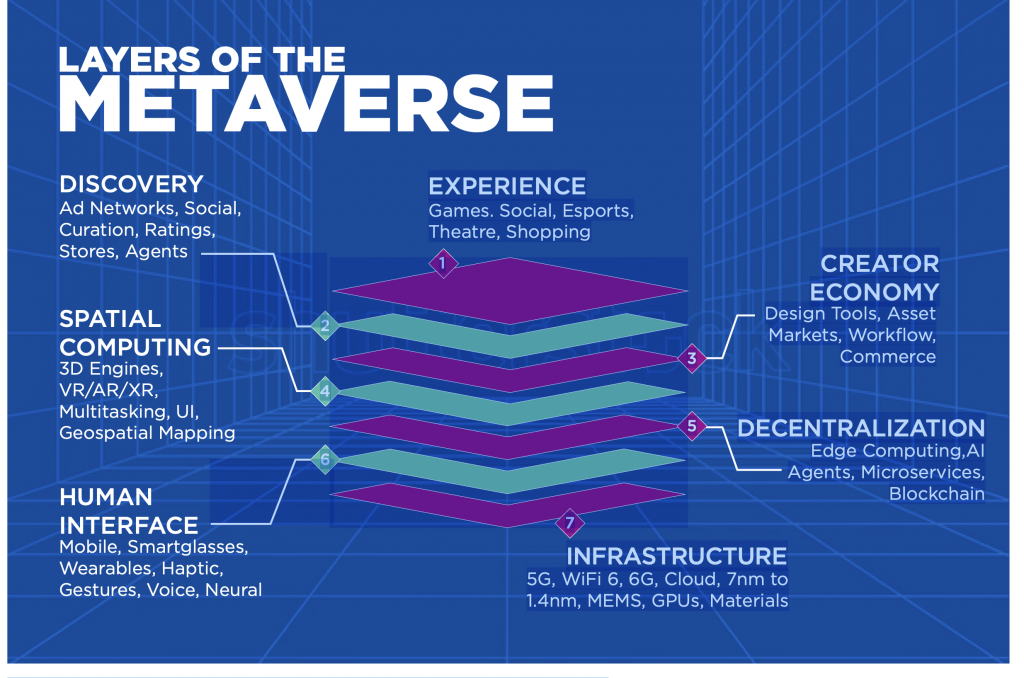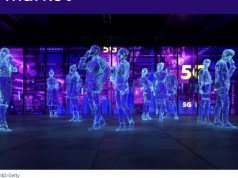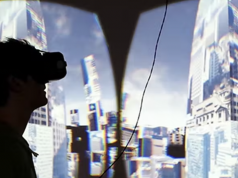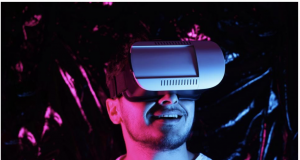National League of Cities, 2022
INTRODUCTION
Cities are the places where people come together, live, love, work and play. Human connection is one of the most critical components of day-to-day life. Much of the world quickly learned how to connect with one another and access services in virtual environments in response to the COVID-19 pandemic. However, we lacked the ideal tools for connecting in this way. Zoom meetings, Google Chat and good old fashioned phone calls provide a poor simulation of the physical world. What if a true simulation of our physical world could be recreated in a virtual manner? What value would this bring to people’s lives, what challenges would it present, and would it ultimately prove to be a net positive for cities?
Technologists and science fiction writers have explored various ideas around virtual reality — and the metaverse — for decades, with various iterations coming online in fits and starts. Whether through video games, online spaces like Second Life or stories like Ready Player One, the future of cities and their residents will include a virtual world where people can immerse themselves in a simulacrum of
the everyday. Much of the recent discussion pointing toward a more fully developed version of this virtual space or metaverse has come about alongside the development of Web 3 technologies — those that will fuel a much- hyped future internet that is decentralized, more anonymous and fueled by digital currencies.
Imagine a future where community members can interact “face-to-face” with building department personnel on the plans for their new deck from the comfort of their own homes, comment at a virtual public meeting from their office chairs, or even connect with their mayor without having to step into city hall. The technology and vision to create these kinds of virtual spaces and facilitate meaningful interpersonal interactions within them is finally here, and the impacts to society are not yet entirely understood. Leaders need to think about what these technologies will mean for cities as they plan for the years and decades ahead.
DEFINING THE METAVERSE
Because it is still being envisioned, there is no agreed upon definition of the metaverse. In short, the metaverse is the next evolution of the internet with a focus on the integration of physical and digital experiences. For some users, the metaverse is an online space meant to digitally recreate the real world. For others, it is a shift in how they interact with their world, using technologies like 3D computing, augmented reality (AR), virtual reality (VR) and blockchain to form new immersive virtual world experiences that have the potential to overlay digital information on our physical world. The metaverse can be a place to play and relax while escaping the real world or it can be a space to do the work of life virtually.
The web and how we use it continuously evolves. Each shift brings additional flexibility for users and increased capacity for engagement with others. The metaverse relies on movement toward Web 3, where users have more control over their experiences and increased ability to engage with other users in new ways. Several layers of the metaverse must be in place to make this future a
reality. Realizing this vision will require new foundational technologies (infrastructure, human interface, decentralization, spatial computing) and an expanded role for creators in developing new design tools, business models, goods and services.1
Although the metaverse is a newer term for most, it has an extensive history in video gaming. CyberTown, an online community with 3D chat rooms and virtual life gameplay, launched in 1995. It laid the foundation
for video games like Second Life (2003), Roblox (2006) and Minecraft (2011), which center on virtual worlds and community building. These games and others start
with each user creating an avatar, a digital representation of the user’s body and persona, before enabling them to explore the virtual world around them and connect with others. Users access these video games through gaming consoles, personal computers and VR devices like headsets. Other games seek to blend the physical and virtual worlds. Games like Pokémon Go,









